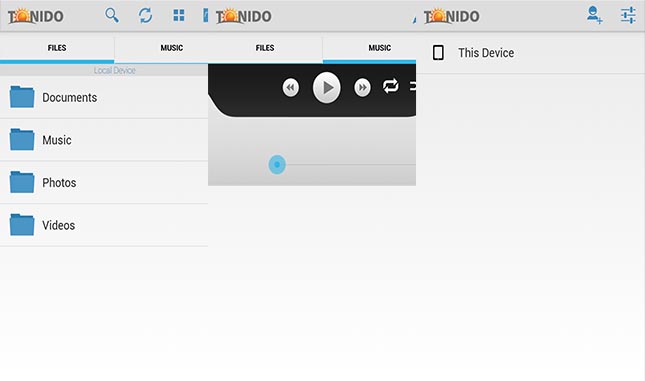Do you know what the SCRUM methodology is? The name comes from a formation or play in the rugby sport , in which eight players from each team fit together to form a kind of human wall. Currently, the word is used to describe a framework for agilesoftware project management.
One of the most interesting things about this methodology is that it doesn’t apply only to software, it can be used in the most diverse types of projects. Even though there are still many myths about its implementation , SCRUM is, little by little, gaining its space in companies that make use of good project management practices.
Do you want to better understand what SCRUM is and how it can be used in your organizational routine? keep reading this post.
What exactly is the SCRUM methodology?
Created by developers Ken Schwaber and Jeff Sutherland , SCRUM is an agile project management methodology. It is based on small, multidisciplinary teams, constant feedback and collaboration of those involved.
The SCRUM model should be seen as a way to guide the work of teams focused on intelligent results and aligned with existing demands. In addition, it expands the alignment of expectations among project participants which help to avoid low dissatisfaction.
How important is the SCRUM methodology?
Nowadays, virtually all organizations seek to improve the efficiency of their teams and reduce wasted time and resources. Knowing how to deliver better quality products and services to delight your customers is something basic for those who want to remain competitive.
However, that’s not all. One of the main characteristics of the times we live in is the need to streamline work processes, as the market works at a really fast pace. With the SCRUM framework companies are able to identify opportunities and develop solutions in a short period of time, gaining competitive advantage.

Courtesy: scrum.org
All teams will have the foundation they need to be more effective and productive. This is true even for scenarios where needs change: teams can quickly assess what needs to be done to adapt to the new scenario and, therefore, reduce the impact of changes in the workflow.
The SCRUM agile methodology, in other words, works in project management, helping to achieve all these goals defined during the planning stages. With greater alignment between teams, it becomes easier to assess what should be done to avoid waste and improve the final result. In other words, the SCRUM methodology expands the ability of management professionals to deliver the results expected by the client.
Read: Best free project management software
How does SCRUM dynamics work?
As mentioned, SCRUM is widely used in software development, but it can be applied in any other professional segment or even in personal projects. This is because the method has important principles that make the work flow in an easier way. See, below, what these bases are.
self-management
SCRUM has well-defined roles and responsibilities. Each member of the team knows their role on the team, making it much easier for the projects to proceed. When each professional knows exactly what their tasks and obligations are, the team manages itself naturally, without the need for constant external demands.
Within a project team working in the SCRUM environment, there are several roles. They are formulated to guide the workflow and ensure that everyone is ready to act autonomously. Check out the roles of this environment below!
Product owner
This assignment is given to the business stakeholders. It can work similarly to a customer service professional or customer success manager.
Devteam or development team
They are the team members, who must have multidisciplinary characteristics. That is, those who perform the routines defined in project planning and at each stage.
SCRUM master
This is the project manager , responsible for directing the team so that the objectives and goals are achieved. The SCRUM master ensures that the entire process is followed. Also participates in daily meetings, Sprint review and planning.
Agility
As it is an agile type of methodology, it is to be expected that SCRUM will focus on speed while meeting customer needs. In fact, the book about the approach is called “ SCRUM: The art of doubling up in half the time ”. The work was written by Jeff Sutherland himself, who is the founder of SCRUM.
This agility is only possible because the bigger objectives are broken in several stages. The work is divided into iterations, which are called sprints. A sprint can last a day or even a few weeks, for example.
Ideally, each Sprint has a fixed time (preferably under a month). This way, teams can organize themselves better and have a more efficient workflow. At the same time, they are able to deliver more results and maintain a continuous alignment of expectations.
Focus on essentials
SCRUM seeks to prioritize the fundamental points of the project, that is, those characteristics that generate the most value for the customer. According to studies, in the development of a software, 80% of the solution value is found in 20% of the functionalities.
To prove the statistics, just look at applications that are used daily, such as Word and Excel. They contain numerous and complex capabilities that are practically never used. Basic functions are usually the real reason we buy the solution.
Thus, the SCRUM methodology advocates that the company focus on implementing the most important attributes of the software or product. These functionalities are kept in a list which is known as the product backlog.
Read: Guide to Social Media for Small Businesses
Alignment meetings
Routine meetings are part of SCRUM’s philosophy of agility and constant feedback, allowing team members to share the progress of their tasks. Thus, if something is stuck, the problem can be quickly resolved, avoiding delays in deliveries and failure to meet agreed deadlines.
Among companies that use the methodology, it is common to have short sprints and daily meetings of a maximum of 15 minutes, also called daily SCRUM. This is the moment when, just like in rugby, players seek to “fit the pieces together”.
At this meeting, the product owner prioritizes the items in the product backlog, and the team selects the activities they will be able to implement during the period that begins.
Lean structure
As with rugby SCRUM, the enterprise SCRUM approach uses a limited number of participants per project. Each project team consists of about seven people .
Collaboration
In SCRUM, it is common for clients to become part of the development team, as long as they are genuinely interested in collaborating and generating the best result. With this way of acting, the team’s rework is considerably reduced, as the main stakeholders in the product are following its creation closely.
Transparency
In many organizations, employees are afraid to acknowledge an error or even point out a problem that might have been encountered before. This is because many management models opt for penalties or repression.
In the SCRUM methodology, all participants are encouraged to cultivate transparency, sharing their problems and difficulties with the team. In this way, issues can be resolved more quickly and with less stress, preventing major failures from being generated in the future.
Adaptability
One of the most interesting features is the adaptability that the methodology provides. When starting a new project or identifying a market opportunity, the team doesn’t need — and shouldn’t — cling to the idea of getting definitive answers.
In SCRUM, hypotheses (possible solutions to the development of a product or to a customer’s problem) are quickly developed and tested in order to gather feedback. From there, the team finds out if it’s worth investing more time and energy in that project, if it’s necessary to start over from scratch, or if it’s necessary to make adjustments.
Read: 7 Requirements to make your blog successful
How to apply SCRUM in your company?
To apply SCRUM in your daily life, some steps must be taken. They help teams to be more agile to incorporate the SCRUM culture into their daily lives. Furthermore, they increase the ability of companies to enjoy the benefits of this way of working.
Check out below some steps that need to be used to run SCRUM in your daily routine!
Assign positions
This is the first step to be taken. Roles must be clearly defined for the SCRUM workflow to work in your company. After all, a clear division of functionalities is one of the bases of this methodology.
For this to work, the company needs to assess the profile of the team and the project. It is important to identify who can be useful for each role based on their skills and potential impact. Thus, you will be able to formulate multidisciplinary teams capable of working according to good quality standards.
List priorities
The prioritization of demands and objectives is a critical step for any project to succeed. This strategy helps in organizing routines and positioning the company. After all, the most important things for each step will receive more attention, which increases the chances that they will be done as expected.
Therefore, make an active communication with those involved in the project to understand their demands and needs. Assess what should be prioritized and how to deliver those results. This way you will be able to have more focus on what is urgent for each step of your projects.
Plan sprints
From prioritization, start planning each Sprint. Set a deadline for its execution, those involved and their responsibilities. Also assess the tools that are needed and how they should be integrated into each person’s daily life.
Don’t forget to evaluate what was delivered at the end of each Sprint. Sprint Review allows the manager to assess what went wrong and what good practices should be replicated. This makes your project a constant flow of learning, where practices are always improved.
Hold regular meetings
Meetings, as we have pointed out, are one of the foundations of SCRUM. They allow teams to align expectations and assess what went right. At the same time, it facilitates the correction of directions and the correction of bad practices.
That’s why meetings should be a very important part of the SCRUM environment. With them, you can keep everyone on the same path and with a similar focus. In other words, everyone will work towards similar goals, even if they have high autonomy.
Ensure a good foundation for your teams to work on
If your company intends to adopt SCRUM, it is not enough to just incorporate the foundations of this philosophy into your daily life. It is also necessary to provide the tools so that teams can work with quality. At the same time, the work culture must be molded to that environment.
This involves investing in good technological tools. A robust project management system facilitates the assessment of results and organization of the work schedule. In this way, teams can act sustainably and ensure that the use of resources is the best possible.
It is also important to empower teams. This measure avoids delays and ensures that teams can act quickly when necessary. There is no way of guaranteeing that the manager will be able to define the best path to take at all times, so give your teams the fundamentals so that they can easily answer calls when necessary.
What are the most used terms and their meanings?
In addition to the points listed above, there are some precautions that must be taken to understand how to take SCRUM into your daily life. These are some of the main terms used in this methodology:
- The burndown chart —a chart of the rest of the work to be done that helps organize the teams’ work;
- The daily SCRUM — a daily quick meeting with the participation of all team members to define the day’s activities and align goals;
- Impediments — obstacles the team encounters that are not discovered during the daily SCRUM meeting. The SCRUM master is responsible for ensuring that these difficulties are resolved in the best possible way;
- The sprint goals — the expectations and objectives for the Sprint. Each goal helps focus teams and improve daily decisions;
- The Product Backlog — a list (organized by priorities) of desired product functionality. It must be continuously updated as the project and expectations evolve;
- The Sprint planning – planning meeting that occurs at the beginning of a sprint to facilitate priority setting and prevent important points are not executed;
- Sprint — a time- bound sequence of activities. During this time, some product functionality must be implemented;
- The sprint task — the smallest portion of work on a project, referring to an activity that typically lasts up to 16 hours.
These terms need to be understood by the team and, especially, by whoever will organize the project’s workflow. After all, they are part of the fundamentals of SCRUM and how it is applied in your daily life. Therefore, always be careful to avoid mistakes that could compromise communication and understanding of each point.
What can we conclude about SCRUM?
The SCRUM methodology is a way to bring more agility, efficiency and quality to any organization’s projects. The approach highlights problems that occur in the development of software projects, providing a means for the team to solve the necessary issues.
In addition, employee satisfaction at companies that use SCRUM also tends to increase. After all, the methodology allows teams to develop autonomy and reap constant learning , bringing a sense of belonging and evolution.
Finally, it is possible to see that agile project management is increasingly adopted in the technology market, especially in the area of software development, where its acceptance grows day by day.
If you like the content, we would appreciate your support by buying us a coffee. Thank you so much for your visit and support.
Adblock test (Why?)
Original page link
Best Cool Tech Gadgets
Top favorite technology gadgets















